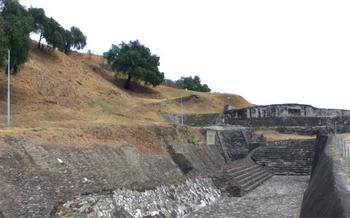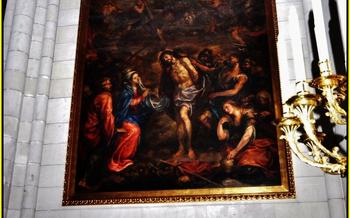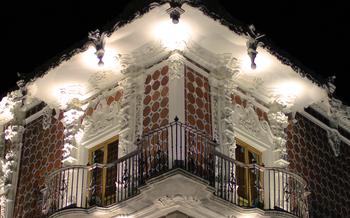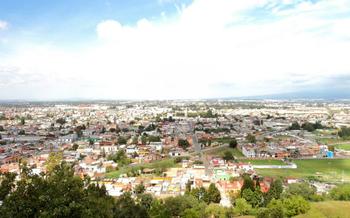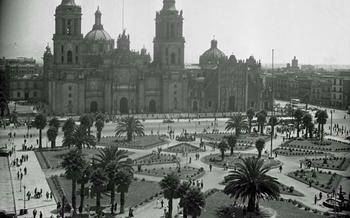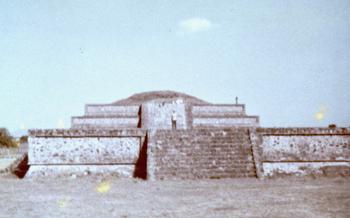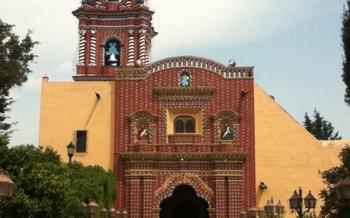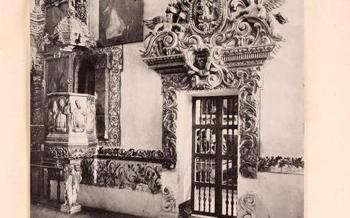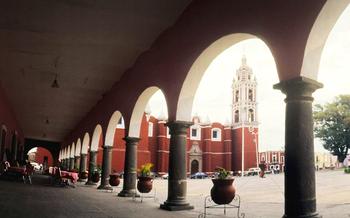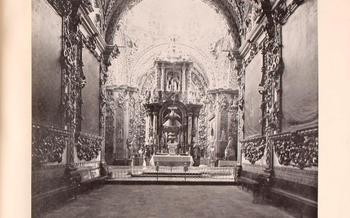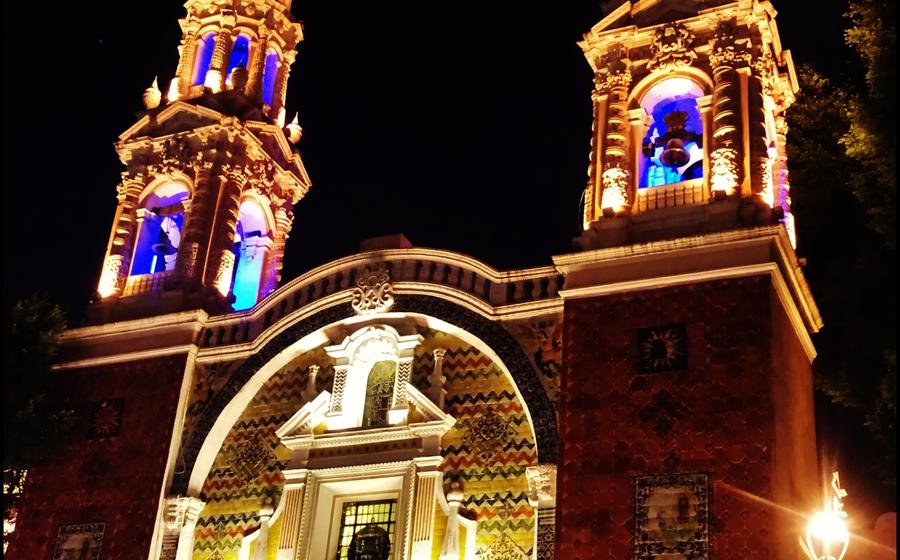
Museo de la Máscara Azteca
- The Museo de la Máscara Azteca: A Journey into Mexican Identity
- Location and Getting There
- Guided Tours and Audio Guides
- Exhibits and Collections
- The Art of Mask Making
- Cultural and Historical Significance
- Photography and Videography
- Amenities and Facilities
- Nearby Attractions
- Planning Your Visit
- Dress Code and Etiquette
- Accessibility for Disabled Visitors
- Educational Programs and Workshops
The Museo de la Máscara Azteca: A Journey into Mexican Identity
The Museo de la Máscara Azteca, nestled in the heart of Puebla, stands as a testament to the vibrant cultural heritage of Mexico. It is a sanctuary dedicated to preserving and showcasing the awe-inspiring masks crafted by the ancient Aztecs, offering visitors a profound insight into the intricate symbolism and artistry that define Mexican identity.
Established in 1985, this museum has become a revered institution, renowned for its exceptional collection of over 2,000 masks, each a masterpiece that speaks volumes about the Aztec civilization. These masks, meticulously crafted from diverse materials such as wood, stone, jade, and turquoise, served as both ritualistic and decorative objects, embodying the deep spiritual beliefs and rich artistic traditions of the Aztec people.
Beyond its aesthetic allure, the Museo de la Máscara Azteca serves as a vital platform for safeguarding and promoting Mexican cultural heritage. Through its comprehensive collection and educational initiatives, the museum strives to foster a profound appreciation for the intricate artistry and profound symbolism embedded within these ancient artifacts, ensuring that the legacy of the Aztec civilization continues to inspire and captivate generations to come.
Location and Getting There
The Museo de la Máscara Azteca is situated in the heart of Puebla's historic center, at Calle 8 Norte No. 705, a mere stone's throw from the majestic Zócalo, the city's vibrant main square. The museum's prime location makes it easily accessible by foot or public transportation. For those arriving by air, the nearest airport is Puebla International Airport (PBC), located approximately 30 kilometers from the city center. From the airport, one can take a taxi or ride-sharing service, or hop on the RUTA bus line, which offers direct service to the city center.
For those driving from Mexico City, the journey to the Museo de la Máscara Azteca takes roughly two hours via the scenic Puebla-Mexico City highway. It is advisable to allow ample time for potential traffic delays, especially during peak travel periods. Once in Puebla, follow the signs to the historic center and look for Calle 8 Norte. The museum is conveniently located just a few steps from the Zócalo, making it impossible to miss.
Guided Tours and Audio Guides
The Museo de la Máscara Azteca offers guided tours in both English and Spanish, providing visitors with an in-depth understanding of the museum's collection and the significance of masks in Mexican culture. Guided tours are conducted by knowledgeable and experienced museum guides who can answer any questions and provide insights into the history and symbolism of the masks.
The cost of a guided tour is typically included in the museum's admission fee. For groups of 10 or more, reservations are recommended to ensure availability. The museum also offers audio guides in multiple languages, allowing visitors to explore the museum at their own pace and in the language of their choice.
The audio guides provide detailed information about the exhibits, as well as historical and cultural context. Visitors can use the audio guides to learn about the history of mask making in Mexico, the different types of masks, and their significance in Aztec society and contemporary Mexican culture.
Exhibits and Collections
The Museo de la Máscara Azteca boasts a diverse collection of masks from various regions of Mexico, showcasing the rich cultural heritage and artistic traditions of the country. The permanent exhibit, "Masks of Mexico," takes visitors on a journey through the history and significance of masks, displaying over 1,000 masks from different ethnic groups and time periods. Highlights include intricate ceremonial masks, whimsical dance masks, and awe-inspiring warrior masks, each with its own unique story to tell.
The museum also hosts temporary exhibits that delve deeper into specific aspects of mask-making and Mexican culture. These exhibits often feature the work of contemporary mask artists, showcasing innovative designs and techniques that push the boundaries of traditional craftsmanship. Interactive displays and educational materials throughout the museum provide visitors with insights into the symbolism, rituals, and beliefs associated with masks, making the visit a truly immersive and enriching experience.
The Art of Mask Making
The Museo de la Máscara Azteca showcases the intricate art of mask making practiced by Aztec artisans. These skilled craftsmen employed various techniques to create masks that were both visually stunning and deeply symbolic.
One of the most common techniques involved carving masks from wood. Wood provided a durable base for intricate designs and allowed for the creation of three-dimensional forms. The masks were then often painted with vibrant colors and adorned with feathers, beads, and other embellishments.
Another technique used by Aztec mask makers was papier-mâché. This method involved layering and molding paper pulp to create lightweight and flexible masks. Papier-mâché was often used for masks that depicted human faces or animals, as it allowed for more lifelike expressions.
The masks created by Aztec artisans served a variety of purposes. Some masks were used in religious ceremonies, where they represented gods, spirits, and ancestors. Others were worn by warriors in battle, where they were believed to provide protection and strength. Masks were also used in festivals and celebrations, where they added an element of mystery and excitement.
The different types of masks created by the Aztecs reflected the diverse aspects of their culture. Human masks, for example, represented the gods and goddesses of the Aztec pantheon, as well as the various social classes and occupations within Aztec society. Animal masks, on the other hand, symbolized the natural world and the power of animals.
Today, the art of mask making continues to thrive in Mexico, with many contemporary artists drawing inspiration from the rich traditions of the past. Visitors to the Museo de la Máscara Azteca can learn about the history and techniques of mask making, as well as admire the exquisite craftsmanship of these ancient works of art.
Cultural and Historical Significance
Masks have played a significant role in Mexican culture for centuries, and the Museo de la Máscara Azteca offers a fascinating glimpse into their cultural and historical significance.
In Aztec culture, masks were used in religious ceremonies to represent gods and spirits. They were also used as symbols of power and status, with different masks reserved for different ranks and occasions.
Masks continue to be an important part of contemporary Mexican culture. They are used in festivals, celebrations, and traditional dances, such as the Day of the Dead and Carnival. Masks are also used in traditional crafts and art, and they are often seen as symbols of Mexican identity.
The Museo de la Máscara Azteca offers visitors an opportunity to learn about the rich history and cultural significance of masks in Mexico. The museum's collection includes masks from all over Mexico, and it provides visitors with a unique opportunity to see how masks have been used in different cultures and contexts.
Photography and Videography
Photography and videography are permitted inside the Museo de la Máscara Azteca, with a few restrictions to ensure the preservation of the artifacts and the comfort of other visitors.
-
Photography: Visitors are allowed to take photographs and videos for personal, non-commercial use. However, flash photography and tripods are prohibited to prevent damage to the delicate masks. For professional photography or commercial purposes, prior permission must be obtained from the museum administration.
-
Videography: Videography is allowed for personal use, but professional filming or video production requires prior authorization. The use of drones or any type of aerial photography is strictly prohibited within the museum premises.
-
Capturing Unique Shots: The museum offers various opportunities for capturing unique and memorable shots. The vibrant colors and intricate details of the masks make for stunning photographs. Visitors can also capture the ambiance of the museum, with its dimly lit galleries and the serene atmosphere that enhances the appreciation of the artwork.
Amenities and Facilities
The Museo de la Máscara Azteca offers a range of amenities and facilities to enhance the visitor experience. Visitors can browse the well-stocked gift shop for souvenirs, books, and unique handicrafts made by local artisans. The shop offers a wide selection of items inspired by the museum's collection, including replicas of masks, jewelry, textiles, and pottery.
Restrooms and baby changing facilities are conveniently located within the museum for the comfort of visitors. The museum is also fully wheelchair accessible, ensuring that all visitors can enjoy the exhibits and facilities. Wheelchair ramps, elevators, and accessible restrooms make it easy for visitors with disabilities to navigate the museum independently.
The museum offers a variety of educational programs and workshops for school groups and families. These programs provide an interactive and engaging way for students to learn about Aztec culture and the significance of masks. Visitors can also participate in mask-making workshops and cultural events, offering a hands-on experience and a deeper understanding of the art of mask making.
Nearby Attractions
In addition to the Museo de la Máscara Azteca, Puebla offers a wealth of cultural and historical attractions to visitors. The city's historic center, a UNESCO World Heritage Site, boasts stunning colonial architecture, including the Puebla Cathedral and the Chapel of the Rosary, renowned for its intricate tiles and opulent interior. Other notable museums include the Amparo Museum, showcasing pre-Hispanic and colonial art, and the Casa del Alfeñique, a stunningly preserved 18th-century mansion.
For those seeking a taste of Puebla's vibrant culinary scene, the city is renowned for its mole poblano, a complex and flavorful sauce served with turkey or chicken. Visitors can savor this regional delicacy at traditional restaurants like La Poblanita or Casa de los Muñecos.
To explore beyond the city center, take a day trip to Cholula, home to the Great Pyramid of Cholula, the largest pyramid in the world by volume. This ancient pyramid, also known as Tlachihualtepetl, offers panoramic views of the surrounding countryside.
With its rich history, delectable cuisine, and captivating attractions, Puebla promises an unforgettable experience for every traveler.
Planning Your Visit
To make the most of your visit to the Museo de la Máscara Azteca, careful planning and preparation are crucial. Consider visiting during the shoulder season, April-May and September-October, to avoid the peak tourist crowds and enjoy a more intimate experience. Plan your arrival during the museum's opening hours, typically from 10 am to 5 pm, to have ample time to explore the exhibits. If possible, dedicate a minimum of two hours to fully appreciate the museum's collection.
To avoid queuing and ensure a smooth entrance, consider purchasing tickets online in advance. This allows you to skip the line and head straight into the museum. For a more comprehensive understanding of the exhibits, opt for a guided tour, available in both English and Spanish. These tours provide in-depth insights into the history, significance, and symbolism of the masks.
If you're short on time, prioritize the museum's highlights, such as the intricate jade masks and the impressive collection of warrior masks. Take advantage of the interactive displays and educational materials to engage with the exhibits in a meaningful way. The museum also offers workshops and demonstrations that provide a deeper understanding of the art of mask making and its cultural significance.
To make the most of your trip to Puebla, consider combining the museum visit with other cultural attractions. Visit the nearby Museo Amparo, which houses a vast collection of pre-Hispanic and colonial art, or explore the city's historic center, a UNESCO World Heritage Site. Puebla offers a diverse culinary scene, so indulge in traditional dishes like mole poblano and cemitas at local restaurants or cafes.
Dress Code and Etiquette
When visiting the Museo de la Máscara Azteca, it is important to dress appropriately and respectfully. Casual attire is acceptable, but avoid wearing shorts, tank tops, or flip-flops. The museum is a sacred place for many indigenous people, and visitors should dress accordingly.
It is also important to be respectful of the museum's rules and regulations. Do not touch or handle the masks, and be mindful of your noise level. The museum is a place for contemplation and learning, and visitors should avoid disturbing others.
If you have any questions or concerns, please feel free to ask a member of the museum staff. They are there to help you have a positive and enjoyable experience.
Accessibility for Disabled Visitors
The Museo de la Máscara Azteca is committed to making its exhibitions and programs accessible to visitors with disabilities. Wheelchair ramps and elevators provide easy access to all areas of the museum, including the galleries, restrooms, and gift shop. Visitors with disabilities can also request assistance from museum staff, who are trained to provide courteous and helpful service.
In addition, the museum offers a variety of programs and services designed specifically for disabled visitors. Guided tours for visitors with hearing impairments are available upon request, and the museum also provides sign language interpreters for educational programs and workshops. The museum's website and brochures are also available in accessible formats.
To ensure a smooth and enjoyable visit, disabled visitors are encouraged to contact the museum in advance to discuss their needs and make any necessary arrangements. The museum staff is happy to work with visitors to create a customized experience that meets their individual requirements.
Educational Programs and Workshops
The Museo de la Máscara Azteca offers a variety of educational programs and workshops designed to engage and inspire visitors of all ages. School groups and families can participate in guided tours that delve deeper into the history and significance of masks in Mexican culture. These tours are tailored to different age groups and educational levels, ensuring that everyone has a meaningful and enriching experience.
Mask-making workshops provide hands-on opportunities for visitors to learn the techniques used by Aztec artisans and create their own unique masks. These workshops are led by experienced instructors who guide participants through the entire process, from selecting materials to painting and decorating their masks.
The museum also hosts cultural events and demonstrations throughout the year. These events showcase the vibrant traditions and artistry of Mexican mask-making, featuring live performances, exhibitions, and interactive activities. Visitors can immerse themselves in the rich cultural heritage of Mexico and gain a deeper appreciation for the art of mask making.
Through its educational programs and workshops, the Museo de la Máscara Azteca fosters a sense of cultural understanding and appreciation among visitors. These programs not only provide a glimpse into the past but also inspire creativity and encourage a deeper connection with Mexican traditions.
